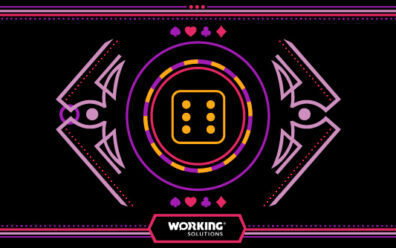Contact Center Operations Contact Center Scalability Contact-Center Outsourcing Cost Savings of Outsourcing Customer Service Outsourcing Customer Service Strategy5 Minute Read
How Much Does Outsourcing Customer Service Cost?
Outsourcing customer service is becoming a strategic move for businesses aiming to reduce costs, improve efficiency, and enhance customer experience (CX). With the right partner, companies can achieve cost savings of up to 50% while accessing highly skilled agents, advanced technology, and 24/7 support.

But how much does it actually cost to outsource customer service? Let’s break down the factors that influence pricing, common pricing models, and cost-saving benefits.
Factors That Influence Customer Service Outsourcing Costs
Several key factors affect outsourcing costs:
- Scope of Services: The complexity of tasks (e.g., live chat, email, multilingual support) impacts pricing. More advanced support requires higher-skilled agents and specialized training.
- Service Level Agreements (SLAs): Faster response times and 24/7 availability increase costs as they require more agents and better infrastructure.
- Volume of Interactions: Higher call/chat/email volumes require more staffing, but economies of scale can reduce per-interaction costs.
- Agent Location & Skill Level: Onshore outsourcing (U.S., Canada) is more expensive due to labor costs, while offshore (Philippines, India) offers lower rates but potential language/time zone trade-offs.
- Technology & Integration: AI-powered automation, CRM integrations, and omnichannel support can raise upfront costs but improve long-term efficiency.
- Industry Compliance Requirements: Regulated industries (healthcare, finance) require compliance-trained agents (HIPAA, PCI-DSS), increasing costs.
Industry Benchmarks: How Much Does It Really Cost?
📌 The average cost to outsource customer service ranges from $2,600 to $3,400 per agent per month for U.S.-based providers. Offshore options can range from $1,000 to $2,000 per agent per month.
In-House vs. Outsourced Cost Comparison:
- In-House Agent Costs: ~$4,500/month (including salary, benefits, office space, training, software).
- Outsourced Agent Costs: ~$2,600–$3,400/month (fully managed CX, technology included).
- Savings Potential: Up to 40-50% cost reduction compared to in-house teams.
Comparing the Different Pricing Models
Outsourcing providers use different pricing structures depending on business needs:
- Per-Minute Pricing: Pay for actual talk time. Ideal for shared agent services but may lead to inconsistent availability.
- Hourly Rate Pricing: Pay per hour for dedicated agents. Ensures consistent brand representation but higher fixed costs.
- Per-Interaction Pricing: Pay per call, chat, or email. Great for predictable volumes but can be costly during spikes.
- Flat Monthly Rate: Set monthly fee regardless of volume. Best for budget control but may include usage limits.
📌 Which Model is Best? It depends on your business size, support volume, and quality expectations.
Cost Benefits of Outsourcing vs. In-House Support
Switching to outsourced customer service offers financial and operational advantages:
- Lower Infrastructure Costs: No need to invest in office space, software, or equipment.
- Reduced Employee Costs: Cuts expenses on hiring, training, and employee benefits.
- Scalability & Flexibility: Scale up or down based on demand without overhead costs.
- 24/7 Support Capability: Provide round-the-clock service without overtime pay.
- Advanced Technology Access: AI-powered automation, analytics, and omnichannel integration included.
Choosing the Right Outsourcing Partner
Selecting an outsourcing provider is critical to CX success. Consider these factors:
- Industry Experience: Look for proven success in your industry with compliance knowledge.
- Cultural & Brand Alignment: Your outsourcing team should represent your brand seamlessly.
- Technology & AI Capabilities: Ensure providers offer AI-driven automation, CRM integration, and real-time analytics.
- Transparent Pricing: Avoid hidden fees and get clear cost estimates upfront.
- Scalability & Flexibility: Choose a provider that adapts to seasonal spikes and future business growth.
📌 Why Working Solutions? We offer premium, scalable CX solutions tailored to your business needs and budget.
Final Thoughts: Is Outsourcing Right for Your Business?
Outsourcing customer service isn’t just about cutting costs, it’s about efficiency, flexibility, and CX quality. By partnering with a trusted provider like Working Solutions, businesses can reduce costs, improve customer satisfaction, and scale effortlessly.
Ready to optimize your customer service costs? Speak with Working Solutions today for a personalized cost analysis and CX strategy session.
Start Saving Today →Marketing Director


This Might Interest You...
This website uses cookies to personalize and improve your experience. Continue browsing our site if you agree to our Cookie Policy or feel free to Manage Cookies yourself.


